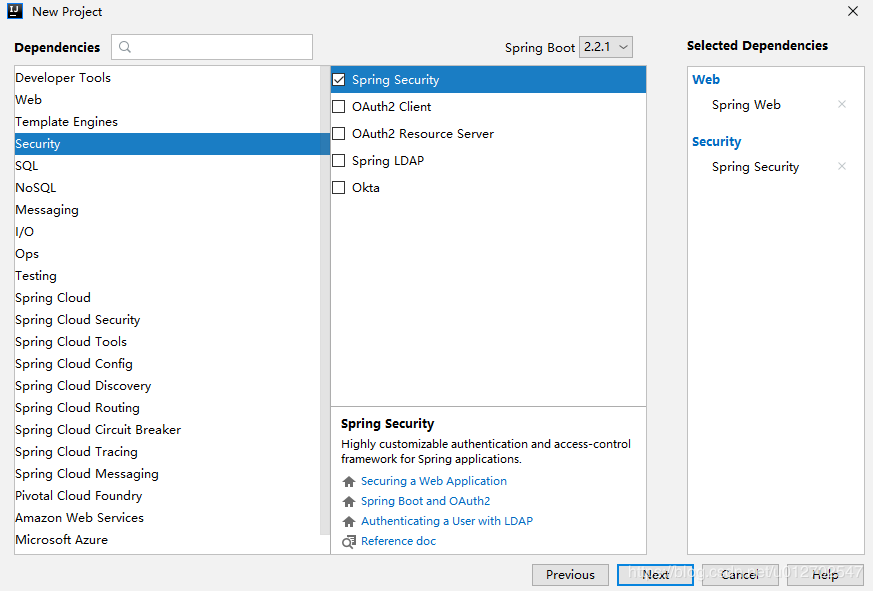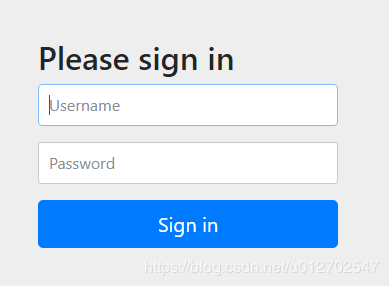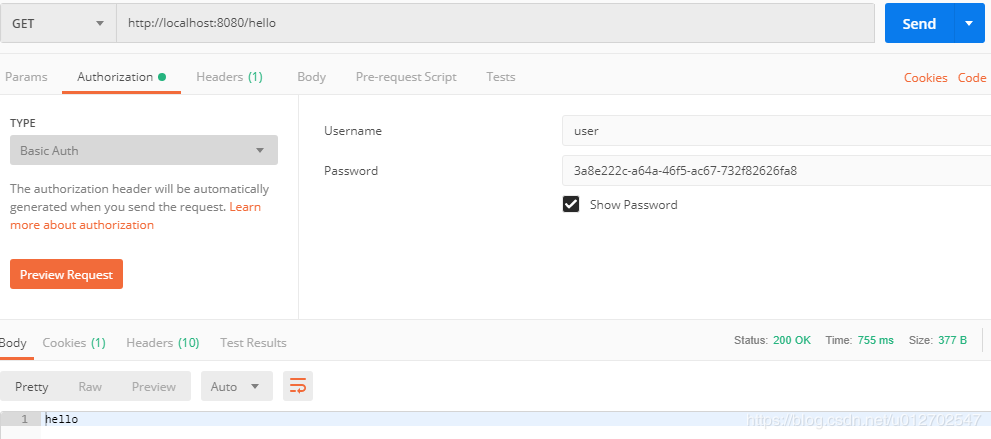- 1Maven
- 2java在线票务系统(选座)Myeclipse开发mysql数据库web结构java编程计算机网页项目
- 3Spring Boot 实战 | Spring Boot整合JPA常见问题解决方案
- 4如何访问openapi_.openapi怎么打开 csdn
- 5字节跳动程序媛教你如何刷算法题:面试手撕代码我就没怕过_手撕代码不会怎么办
- 6微信小程序:fail api scope is not declared in the privacy agreement(授权点击没反应)
- 7Windows本地搭建Emby媒体库服务器并实现远程访问「内网穿透」_emby server
- 8Druid连接池及监控在Spring配置如下:_spring druid监控
- 9PyTorch 最新安装教程
- 10基于Java+SpringBoot+Thymeleaf(校园)点餐/外卖系统设计与实现_校园点餐送餐系统设计
【SpringBoot】Spring Boot 整合 Spring Sercrity_springboot spring.ser
赞
踩
Spring Security 是 Spring 家族中的一个安全管理框架,实际上,在 Spring Boot 出现之前,Spring Security 就已经发展了多年了,但是使用的并不多,安全管理这个领域,一直是 Shiro 的天下。
相对于 Shiro,在 SSM/SSH 中整合 Spring Security 都是比较麻烦的操作,所以,Spring Security 虽然功能比 Shiro 强大,但是使用反而没有 Shiro 多(Shiro 虽然功能没有 Spring Security 多,但是对于大部分项目而言,Shiro 也够用了)。
自从有了 Spring Boot 之后,Spring Boot 对于 Spring Security 提供了 自动化配置方案,可以零配置使用 Spring Security。
因此,一般来说,常见的安全管理技术栈的组合是这样的:
- SSM + Shiro
- Spring Boot/Spring Cloud + Spring Security
注意,这只是一个推荐的组合而已,如果单纯从技术上来说,无论怎么组合,都是可以运行的。
我们来看下具体使用。
1.项目创建
在 Spring Boot 中使用 Spring Security 非常容易,引入依赖即可:

pom.xml 中的 Spring Security 依赖:
- <dependency>
- <groupId>org.springframework.boot</groupId>
- <artifactId>spring-boot-starter-security</artifactId>
- </dependency>
- 复制代码
只要加入依赖,项目的所有接口都会被自动保护起来。
2.初次体验
我们创建一个 HelloController:
- @RestController
- public class HelloController {
- @GetMapping("/hello")
- public String hello() {
- return "hello";
- }
- }
- 复制代码
访问 /hello ,需要登录之后才能访问。

当用户从浏览器发送请求访问 /hello 接口时,服务端会返回 302 响应码,让客户端重定向到 /login 页面,用户在 /login 页面登录,登陆成功之后,就会自动跳转到 /hello 接口。
另外,也可以使用 POSTMAN 来发送请求,使用 POSTMAN 发送请求时,可以将用户信息放在请求头中(这样可以避免重定向到登录页面):

通过以上两种不同的登录方式,可以看出,Spring Security 支持两种不同的认证方式:
- 可以通过 form 表单来认证
- 可以通过 HttpBasic 来认证
3.用户名配置
默认情况下,登录的用户名是 user ,密码则是项目启动时随机生成的字符串,可以从启动的控制台日志中看到默认密码:

这个随机生成的密码,每次启动时都会变。对登录的用户名/密码进行配置,有三种不同的方式:
- 在 application.properties 中进行配置
- 通过 Java 代码配置在内存中
- 通过 Java 从数据库中加载
前两种比较简单,第三种代码量略大,本文就先来看看前两种,第三种后面再单独写文章介绍,也可以参考我的微人事项目。
3.1 配置文件配置用户名/密码
可以直接在 application.properties 文件中配置用户的基本信息:
- spring.security.user.name=javaboy
- spring.security.user.password=123
- 复制代码
配置完成后,重启项目,就可以使用这里配置的用户名/密码登录了。
3.2 Java 配置用户名/密码
也可以在 Java 代码中配置用户名密码,首先需要我们创建一个 Spring Security 的配置类,集成自 WebSecurityConfigurerAdapter 类,如下:
- @Configuration
- public class SecurityConfig extends WebSecurityConfigurerAdapter {
- @Override
- protected void configure(AuthenticationManagerBuilder auth) throws Exception {
- //下面这两行配置表示在内存中配置了两个用户
- auth.inMemoryAuthentication()
- .withUser("javaboy").roles("admin").password("$2a$10$OR3VSksVAmCzc.7WeaRPR.t0wyCsIj24k0Bne8iKWV1o.V9wsP8Xe")
- .and()
- .withUser("lisi").roles("user").password("$2a$10$p1H8iWa8I4.CA.7Z8bwLjes91ZpY.rYREGHQEInNtAp4NzL6PLKxi");
- }
- @Bean
- PasswordEncoder passwordEncoder() {
- return new BCryptPasswordEncoder();
- }
- }
- 复制代码

这里我们在 configure 方法中配置了两个用户,用户的密码都是加密之后的字符串(明文是 123),从 Spring5 开始,强制要求密码要加密,如果非不想加密,可以使用一个过期的 PasswordEncoder 的实例 NoOpPasswordEncoder,但是不建议这么做,毕竟不安全。
Spring Security 中提供了 BCryptPasswordEncoder 密码编码工具,可以非常方便的实现密码的加密加盐,相同明文加密出来的结果总是不同,这样就不需要用户去额外保存盐的字段了,这一点比 Shiro 要方便很多。
4.登录配置
对于登录接口,登录成功后的响应,登录失败后的响应,我们都可以在 WebSecurityConfigurerAdapter 的实现类中进行配置。例如下面这样:
- @Configuration
- public class SecurityConfig extends WebSecurityConfigurerAdapter {
- @Autowired
- VerifyCodeFilter verifyCodeFilter;
- @Override
- protected void configure(HttpSecurity http) throws Exception {
- http.addFilterBefore(verifyCodeFilter, UsernamePasswordAuthenticationFilter.class);
- http
- .authorizeRequests()//开启登录配置
- .antMatchers("/hello").hasRole("admin")//表示访问 /hello 这个接口,需要具备 admin 这个角色
- .anyRequest().authenticated()//表示剩余的其他接口,登录之后就能访问
- .and()
- .formLogin()
- //定义登录页面,未登录时,访问一个需要登录之后才能访问的接口,会自动跳转到该页面
- .loginPage("/login_p")
- //登录处理接口
- .loginProcessingUrl("/doLogin")
- //定义登录时,用户名的 key,默认为 username
- .usernameParameter("uname")
- //定义登录时,用户密码的 key,默认为 password
- .passwordParameter("passwd")
- //登录成功的处理器
- .successHandler(new AuthenticationSuccessHandler() {
- @Override
- public void onAuthenticationSuccess(HttpServletRequest req, HttpServletResponse resp, Authentication authentication) throws IOException, ServletException {
- resp.setContentType("application/json;charset=utf-8");
- PrintWriter out = resp.getWriter();
- out.write("success");
- out.flush();
- }
- })
- .failureHandler(new AuthenticationFailureHandler() {
- @Override
- public void onAuthenticationFailure(HttpServletRequest req, HttpServletResponse resp, AuthenticationException exception) throws IOException, ServletException {
- resp.setContentType("application/json;charset=utf-8");
- PrintWriter out = resp.getWriter();
- out.write("fail");
- out.flush();
- }
- })
- .permitAll()//和表单登录相关的接口统统都直接通过
- .and()
- .logout()
- .logoutUrl("/logout")
- .logoutSuccessHandler(new LogoutSuccessHandler() {
- @Override
- public void onLogoutSuccess(HttpServletRequest req, HttpServletResponse resp, Authentication authentication) throws IOException, ServletException {
- resp.setContentType("application/json;charset=utf-8");
- PrintWriter out = resp.getWriter();
- out.write("logout success");
- out.flush();
- }
- })
- .permitAll()
- .and()
- .httpBasic()
- .and()
- .csrf().disable();
- }
- }
- 复制代码

我们可以在 successHandler 方法中,配置登录成功的回调,如果是前后端分离开发的话,登录成功后返回 JSON 即可,同理,failureHandler 方法中配置登录失败的回调,logoutSuccessHandler 中则配置注销成功的回调。
5.忽略拦截
如果某一个请求地址不需要拦截的话,有两种方式实现:
- 设置该地址匿名访问
- 直接过滤掉该地址,即该地址不走 Spring Security 过滤器链
推荐使用第二种方案,配置如下:
- @Configuration
- public class SecurityConfig extends WebSecurityConfigurerAdapter {
- @Override
- public void configure(WebSecurity web) throws Exception {
- web.ignoring().antMatchers("/vercode");
- }
- }




